Gallery: Early Bicycle Advertisements
Bicycling had been popular for well over a decade when the first bike ad appeared in the Post.
However, as Margaret Guroff points out in “How Bikes Built Our Highways,” the bicycling fad had begun to fade by the turn of the century. Bicycle outings and cross-country tours were no longer appealing to the trendsetters who were probably captivated by the new horseless carriages.
But there was still a healthy market for the bicycle makers, as these ads show.
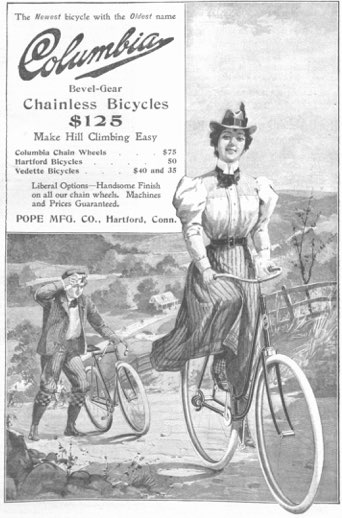
June 25, 1898
(Click to enlarge)
Columbia was one of the first major bicycle brands. Pope Manufacturing had been founded by Albert A. Pope, the man who gathered 150,000 signatures asking for a federal agency to promote building bike-able roads.
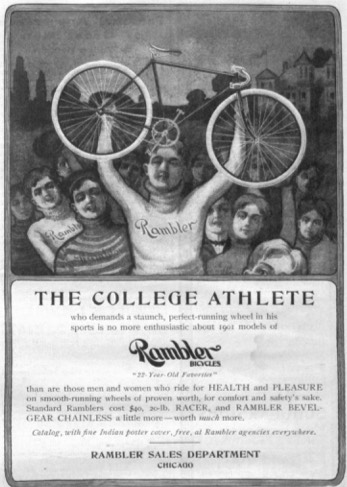
April 13, 1901
(Click to enlarge)
Thomas B. Jeffery founded Rambler Bicycles and eventually went on to start the long-lived Rambler automobile line.

June 8, 1901
(Click to enlarge)
Working without a retail store, the Cash Buyer’s Union offered bicycles-by-mail. Customers could pick up their bike at the train station and take it for a 10-day trial. The top-of-the-line model cost $15.95 — that’s $458 in today’s money, which is about in the middle of the current price range.
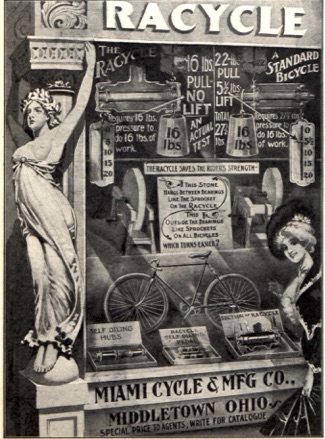
February 22, 1902
(Click to enlarge)
The Miami Cycle & Manufacturing Company, which produced the Racycle, followed the same route that others in the industry took, moving from bikes to motorized vehicles. By 1910, the company employed 1,000 workers and built 100,000 bicycles a year. It was also producing 10,000 motorcycles.
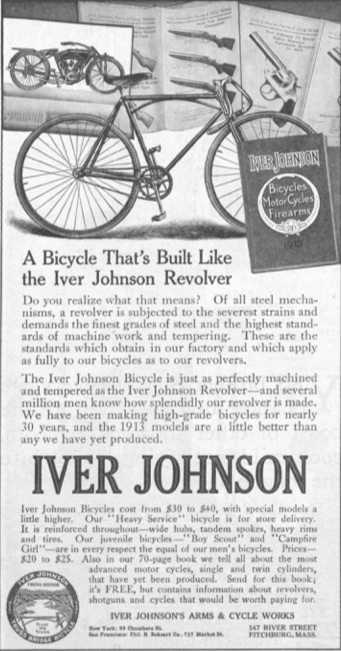
May 10, 1913
(Click to enlarge)
Iver Johnson immigrated to America from Norway in 1863. His arrival was well timed; there was plenty of work for a gunsmith in the middle of the Civil War. In 1900, his company moved into the bicycle business.
Iver Johnson bikes were known for graceful styling and the truss-bridge frame. This curved tube under the top of the frame provided added strength to handle the rough roads.
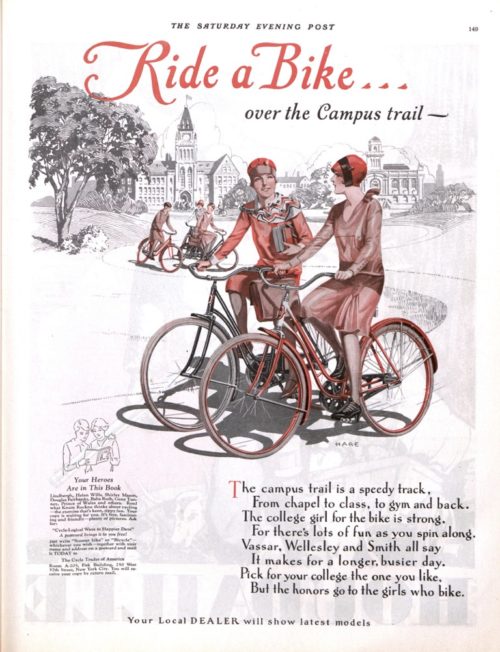
April 20, 1929
(Click to enlarge)
Hoping there would be a resurgence of interest in bicycling after World War I, bicycle makers formed The Cycle Trades of America to promote their products. They also conducted market research, which revealed that 75% of Americans now regarded bikes more as cheap, efficient transportation than as a form of recreation.
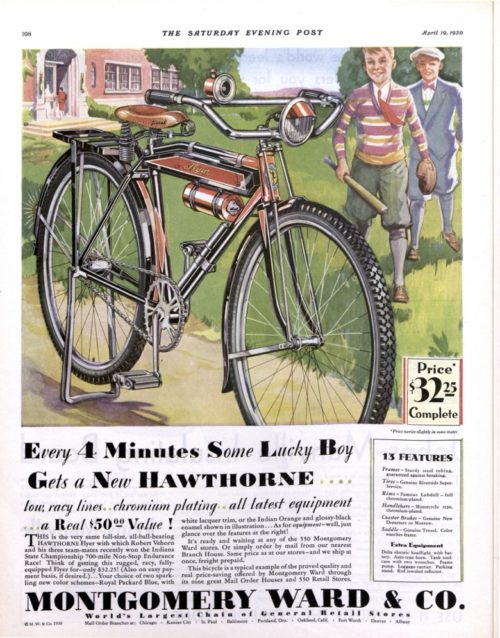
April 19, 1930
(Click to enlarge)
Montgomery Ward, like Sears & Roebuck, had evolved from catalog sales to a chain of retail stores across the country. In 1930, the year it turned down an offer to merge with Sears, it introduced this model of its Hawthorne bicycle.
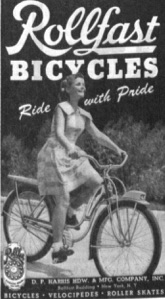
April 12, 1947
(Click to enlarge)
Rollfast Bicycles were first manufactured in the 1890s by the D. P. Harris Hardware and Manufacturing Co. In 1900, they joined the H. P. Snyder Manufacturing Co., which took over the job of making the bicycles while Harris made parts. Snyder also manufactured Hawthorne bikes for Montgomery Ward through the 1930s.
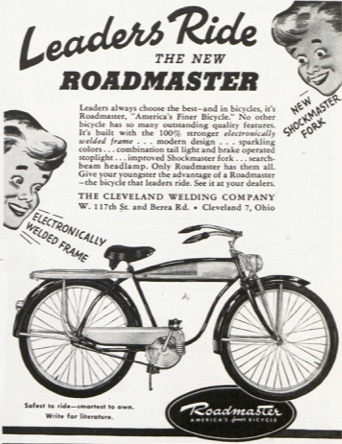
December 6, 1947
(Click to enlarge)
The Roadmaster line of bicycles was created in 1935 by the Cleveland Welding Company. The brand was sold to AMF in 1950. In 1979, the company enjoyed on a wave of publicity when its track bikes were featured in the movie “Breaking Away.” Roadmaster is still a popular bicycle brand.
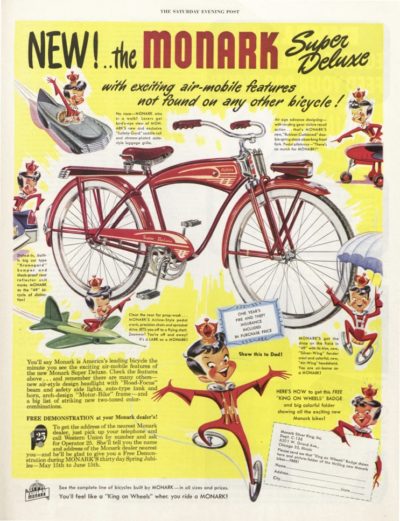
May 14, 1949
(Click to enlarge)
The American automobile industry of the 1950s celebrated a vigorous economy with models that were bigger, fatter, and more luxurious. Bicycles of that era followed the same trend. This Super Deluxe Monark featured wide, white-walled tires, a heavy frame, chrome details, and “Monark’s new, ‘Rubber Cushioned’ double spring shock absorbing front fork” — which the ad hinted was inspired by aircraft landing gear.